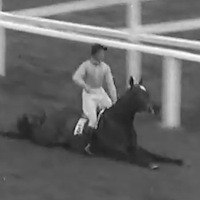Founding of Alocoholics Anonymous (June 10, 1935)

In 1920’s America, the government instituted a law that prohibited the distribution and consumption of alcoholic beverages. The law was merely an attempt by the Federal Government to legislate morality in America. The attempt failed. Initially, alcohol consumption dropped dramatically, but within a few years, it had climbed back to where it had been—and beyond. Organized crime began to corrupt good people and by the time Prohibition was repealed in 1933, crime, drug abuse, and alcohol abuse rose to all-time highs.
It was in 1918, that a young Second Lieutenant William Wilson took his first drink of alcohol. He drank to alleviate stress and depression—despite the fact he had watched alcohol tear his own family apart. He married that same year and the couple seemed the epitome of happiness and prosperity. By 1933, however, they were living on charity in her parents’ house.
Alcohol drove Bill Wilson practically into destitution. It halted his career as a businessman. It destroyed his military career. And yet, he continued. He followed the philosophies of the time and the “purge-and-puke” method of alcohol rehabilitation. He had joined the Oxford Group which was the only rehab program available at the time. The message of the group got through to him and he stopped drinking and seemed to be recovering well.
Five months later, he found himself in Akron, OH, on business. The deal he had gone there to close fell through and the only thing he could think of was how much he wanted a drink. He hadn’t touched alcohol in five months. He felt the draw of the bar across the street from his hotel. At that point, he convinced himself that the only way to cure himself of the poison was to help another who was similarly afflicted.
After many phone calls, he found Dr. Robert Smith, “a skeptical drunk whose family persuaded him to give Griffin 15 minutes.” The two spent several hours together and a month later, June 10, 1935, Dr. Bob Smith drank his last drink. That date became the official date of the founding of Alcoholics Anonymous.
Built on the premise that only an alcoholic can help another alcoholic, AA became the Nation’s leading alcohol recovery program. At it’s inception, there were approximately 100 members at Griffin’s home in New York. Wilson began writing down what he claimed were his principles to sobriety. These were scuttled off to Akron for Dr. Bob to read and edit. The final, 400 page revision was titled Alcoholics Anonymous, which became the name of the group.
The book, however, wasn’t selling. The bank foreclosed on Wilson’s house and he and his wife began living as guests at others’ houses. It was not until March of 1941, when The Saturday Evening Post published an article on the group that things took off. Membership in AA tripled and Wilson felt satisfied that he was finally reaching his audience.
Today, AA has over two million members world wide. The 12-step program has been revised, as well, for use in the assistance of those with drug, gambling, and/or sex addictions, as well as eating disorders. According to the Alcoholics Anonymous website, it was due to the influence of the AA that the American Medical Association redefined alcoholism as a disease and not merely a failure of willpower.
This week, my own family lost someone very dear to us—my father-in-law, Jim Barnard. The man that I knew was a sharp-witted and highly intelligent man. Jim was also an alcoholic. Early in my husband’s life, Jim finally decided enough was enough. He became a member of AA and proudly abstained from alcohol until his death, June 11, 2008.
This article is written in loving memory of a great man who overcame one disease only to be ravished by another. AA found the cure for alcoholism; perhaps soon doctors will find the cure for cancer.
For more information, or to view the source of information for this article, please visit Alcoholics Anonymous.
It was in 1918, that a young Second Lieutenant William Wilson took his first drink of alcohol. He drank to alleviate stress and depression—despite the fact he had watched alcohol tear his own family apart. He married that same year and the couple seemed the epitome of happiness and prosperity. By 1933, however, they were living on charity in her parents’ house.
Alcohol drove Bill Wilson practically into destitution. It halted his career as a businessman. It destroyed his military career. And yet, he continued. He followed the philosophies of the time and the “purge-and-puke” method of alcohol rehabilitation. He had joined the Oxford Group which was the only rehab program available at the time. The message of the group got through to him and he stopped drinking and seemed to be recovering well.
Five months later, he found himself in Akron, OH, on business. The deal he had gone there to close fell through and the only thing he could think of was how much he wanted a drink. He hadn’t touched alcohol in five months. He felt the draw of the bar across the street from his hotel. At that point, he convinced himself that the only way to cure himself of the poison was to help another who was similarly afflicted.
After many phone calls, he found Dr. Robert Smith, “a skeptical drunk whose family persuaded him to give Griffin 15 minutes.” The two spent several hours together and a month later, June 10, 1935, Dr. Bob Smith drank his last drink. That date became the official date of the founding of Alcoholics Anonymous.
Built on the premise that only an alcoholic can help another alcoholic, AA became the Nation’s leading alcohol recovery program. At it’s inception, there were approximately 100 members at Griffin’s home in New York. Wilson began writing down what he claimed were his principles to sobriety. These were scuttled off to Akron for Dr. Bob to read and edit. The final, 400 page revision was titled Alcoholics Anonymous, which became the name of the group.
The book, however, wasn’t selling. The bank foreclosed on Wilson’s house and he and his wife began living as guests at others’ houses. It was not until March of 1941, when The Saturday Evening Post published an article on the group that things took off. Membership in AA tripled and Wilson felt satisfied that he was finally reaching his audience.
Today, AA has over two million members world wide. The 12-step program has been revised, as well, for use in the assistance of those with drug, gambling, and/or sex addictions, as well as eating disorders. According to the Alcoholics Anonymous website, it was due to the influence of the AA that the American Medical Association redefined alcoholism as a disease and not merely a failure of willpower.
This week, my own family lost someone very dear to us—my father-in-law, Jim Barnard. The man that I knew was a sharp-witted and highly intelligent man. Jim was also an alcoholic. Early in my husband’s life, Jim finally decided enough was enough. He became a member of AA and proudly abstained from alcohol until his death, June 11, 2008.
This article is written in loving memory of a great man who overcame one disease only to be ravished by another. AA found the cure for alcoholism; perhaps soon doctors will find the cure for cancer.
For more information, or to view the source of information for this article, please visit Alcoholics Anonymous.
You Should Also Read:
Prohibition (January 16, 1919-December 5, 1933)
Bloody Valentines (February 14, 1929)
Beauty & Self Channel

Related Articles
Editor's Picks Articles
Top Ten Articles
Previous Features
Site Map
Content copyright © 2023 by Christa Mackey. All rights reserved.
This content was written by Christa Mackey. If you wish to use this content in any manner, you need written permission. Contact Lane Graciano for details.







